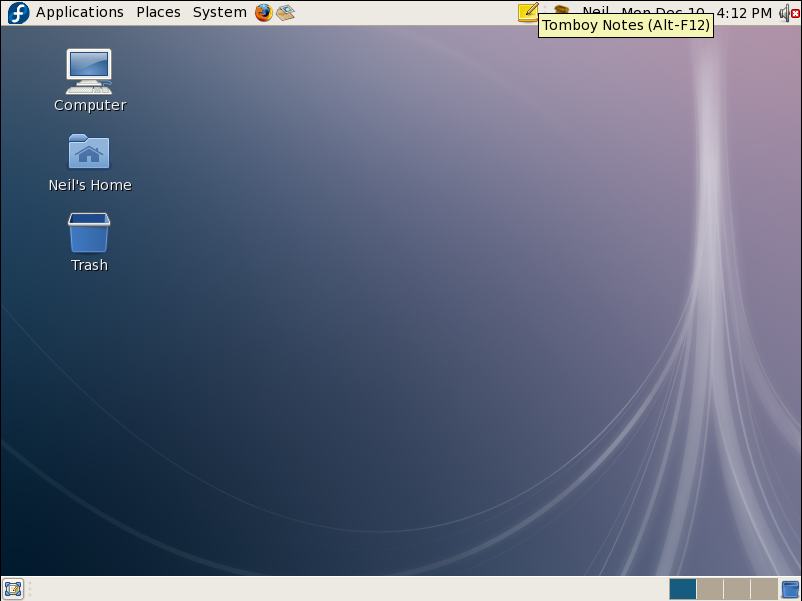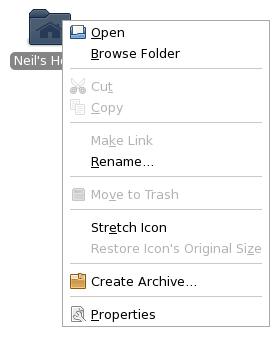A Guided Tour of the Fedora GNOME Desktop
In this chapter of Fedora Desktop Essentials we will provide a guided tour of the Fedora GNOME Desktop. The purpose of this overview is to provide a detailed explanation of how the desktop works and what the various area, menus and icons are for. As each area is described you will be referred to a subsequent chapter where the configuration of that particular feature or function will be detailed.
The Fedora GNOME Desktop
Once you have entered a valid username and password the login process will initiate and the Fedora GNOME Desktop will load. The amount of time it takes before the desktop appears will depend on a variety of factors, not the least of which are processor speed and memory. The more memory installed in the system and the faster the processor, the quicker the desktop will appear. The following figure shows a new, unaltered Fedora desktop immediately after a successful log in. Do not worry if your background does not look the same as the one shown below. The Fedora Project team change the background with every release.
Assuming you have now logged successfully into a Fedora GNOME Desktop session, and have a screen in front of you similar to the one shown above we can begin to explore the desktop in more detail.
The Desktop Background
The desktop background constitutes the swirling graphics in the above figure. Fedora 8 introduced the concept of a dynamically changing desktop background. In Fedora 8 the background changes color gradually as the day progresses. If you don't like the default desktop you can change it to either a selection of pre-installed images, or to a digital picture or image of your choosing. To find out more about customizing the background read Changing the Fedora GNOME Desktop Background chapter.
The desktop also provides a location for folders and applications for which quick access is required. A link to the users home folder is added to the desktop by default, as are the My Computer and Trash icons. The former provides access to storage devices and the network. The latter contains any files that have been placed in the trash can. For more details on these desktop features refer to Browsing My Computer, Files and Folders on the Fedora Desktop.
Clicking with the right mouse button on any area of the desktop background presents the following popup menu containing a number of useful options for changing or adding items to the Fedora GNOME desktop:
- Create Folder - Creates a new folder in on the desktop. A new folder icon appears on the desktop with a field provided for the user to enter a folder name. The folder is physically located in the Desktop folder of the user's home directory.
- Create Launcher - Allows an icon to placed on the desktop which, when double clicked, launches a specified application. Another way to add application launchers to the desktop is to find them in the menu systems at the top of the screen, right click on them and select Add this launcher to desktop.
- Create Document - Creates a new document on the desktop (file is physically located in Desktop folder of the current user's home directory.
- Clean Up by Name - Sorts and organizes the desktop icons in alphabetical order.
- Keep Aligned - A toggle setting which dictates whether icons should be neatly aligned on the desktop or allowed to be placed arbitrarily around the desktop.
- Change Desktop Background - Allows a different background image to be specified.
Right clicking on an icon produces the following menu allowing tasks to be performed on the selected item:





